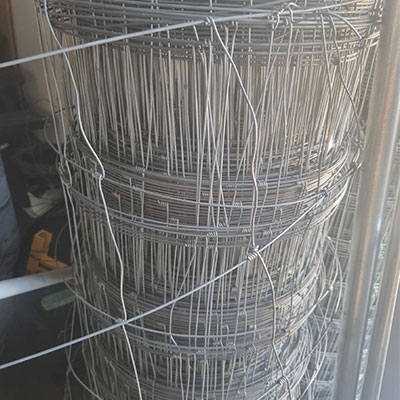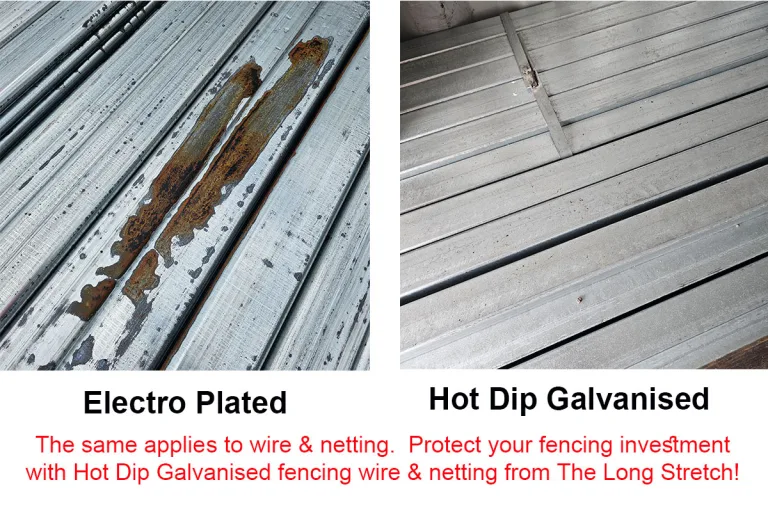The Complete Guide to Hinge Joint Fence Netting
Hinge joint fence netting is one of the most popular and reliable fencing solutions for farmers, ranchers, and property owners. Designed to provide flexibility, durability, and affordability, this fencing type is ideal for livestock containment, farm enclosures, and wildlife protection. In this guide, we’ll explore the benefits, applications, and installation tips for hinge joint fence netting.
Click To View ProductWhat is Hinge Joint Fence Netting?
It is a woven wire fencing system that uses hinge knots to connect vertical and horizontal wires. The hinge joint design allows the fence to flex under pressure, making it an excellent choice for areas where livestock may push against the fencing or where the terrain is uneven.
This type of fencing is commonly used in agricultural settings to contain cattle, sheep, goats, and other livestock, as well as to keep predators and unwanted animals out. Its affordability and ease of installation make it a preferred choice for both small farms and large-scale operations.
Benefits of Hinge Joint Fence Netting
1. Flexibility and Impact Resistance
The hinge joint design provides a level of flexibility that helps absorb impact from animals without compromising the fence’s structure. This prevents damage and prolongs the fence’s lifespan.
2. Cost-Effective Solution
Compared to other fencing types, hinge joint fencing is an affordable option that provides great value for money. Its long lifespan and minimal maintenance requirements make it a budget-friendly choice for farmers and landowners.
3. Durability and Longevity
Made from high-tensile galvanized steel, hinge joint fence netting is highly resistant to rust, corrosion, and weather-related damage. With proper installation, it can last for decades, providing long-term security.
4. Suitable for Various Livestock and Applications
Hinge joint fencing is versatile and can be used to contain a variety of animals, including:
- Cattle
- Sheep
- Goats
- Horses
- Deer
Additionally, it is effective for protecting crops and gardens from wildlife intrusions.
5. Easy Installation and Maintenance
Hinge joint fence netting is relatively easy to install and can be used on different types of terrain, including hilly or uneven ground. Regular inspections and occasional tightening help maintain its integrity.
Installation Tips
1. Plan Your Layout
Before installing your fence, determine the perimeter and mark post locations. Proper planning ensures an efficient installation process.
2. Choose Quality Posts
For strong support, use sturdy wooden, steel, or concrete posts. The strength of the posts is crucial for maintaining the fence’s stability over time.
3. Correct Spacing and Tensioning
Posts should be spaced appropriately to provide adequate support. Ensure the fence is properly tensioned using a stretcher or tensioning tool to maintain a firm barrier.
4. Secure the Bottom of the Fence
To prevent animals from digging under the fence, consider burying a portion of the mesh or adding a wire apron along the bottom.
5. Regular Maintenance
Check your fence periodically for any signs of wear, sagging, or damage. Tighten wires as needed and replace any weakened posts to ensure continued effectiveness.
Choosing the Right Hinge Joint Fence Netting
When selecting hinge joint fence netting, consider the following factors:
- Wire Gauge: Thicker wire provides greater strength and durability.
- Mesh Spacing: Narrower spacing at the bottom helps keep out small animals and predators.
- Coating Type: Class 3 galvanized or zinc-aluminum coatings offer excellent corrosion resistance.
- Height: Choose a fence height that suits your livestock and security needs.
Final Thoughts
Hinge joint fence netting is an excellent fencing choice for farmers, station owners and property owners looking for an affordable, durable, and flexible solution. Its ability to withstand impact, adapt to various terrains, and provide long-lasting protection makes it a top pick for livestock containment and land management.
Are you considering installing hinge joint fencing on your property? Share your thoughts and experiences in the comments below!
Have a look here for more types of fencing.



